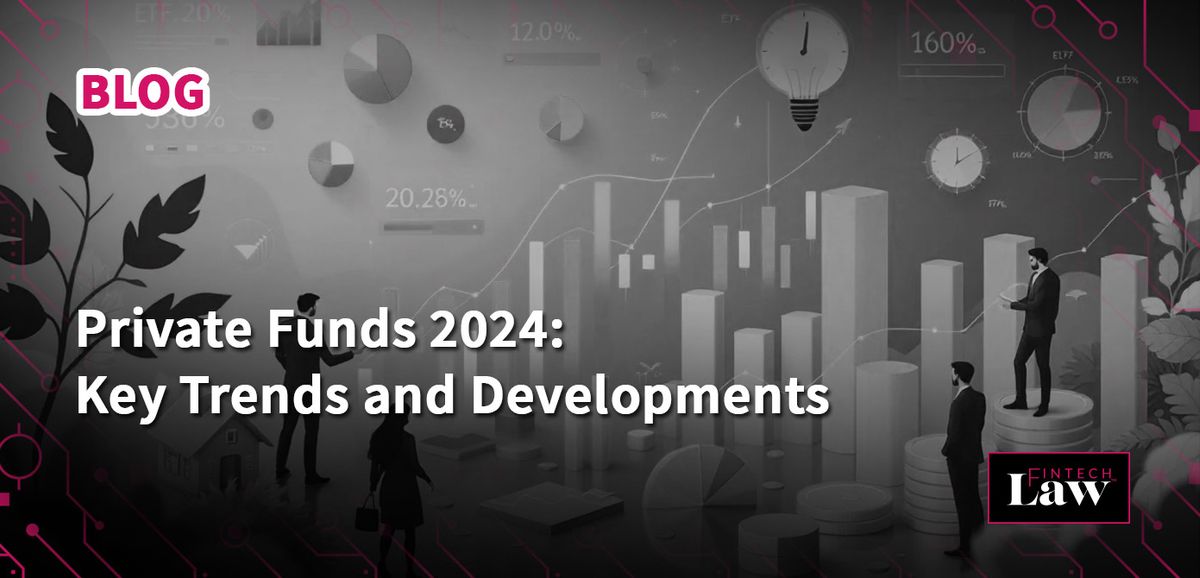Private Funds 2024: Key Trends and Developments

The US Securities and Exchange Commission (SEC) recently released Private Fund Statistics for the third quarter of 2024, which paint a picture of a maturing and evolving private fund landscape.
While the market continues to expand, several key trends are reshaping the ecosystem:
Private Funds 2024 Trends
Ongoing Private Fund Trends from 2023 to 2024
Several structural trends continued or intensified over the past year within the private fund sector:
- Overall Private Fund Growth
The number of private funds grew from approximately 47,600 in Q3 2023 to over 50,600 in Q3 2024. - Dominance of Private Equity
Private equity funds remain the largest segment by number and assets, now comprising nearly 46% of private fund assets under management. - Steady Hedge Fund Numbers
Hedge funds remained steady in number but showed asset growth, reflecting strong market returns and continued institutional allocations. - Concentration of Assets
A growing concentration of assets among the largest private fund advisers mirrors trends in the registered fund world. - Rising Regulatory Burden for Private Fund Managers
On top of regulatory changes in asset management, highlighted in earlier periods, private fund managers now face more frequent and detailed reporting obligations, particularly through enhanced Form PF requirements, which complicate compliance and operational burdens.
Private Funds 2024 Trends
Changing Trends & New Pressures For Private Fund Managers
Important changes have become more visible in 2024:
- Growth in Venture Capital Stalls
After several years of expansion, venture capital fund numbers and asset growth have flattened, reflecting tighter capital markets and a cooler startup funding environment. - Increased Borrowing Affecting Hedge Funds
Hedge fund borrowings as a percentage of GAV have steadily increased, now reaching 51.6%, suggesting higher leverage risks across the industry. - Rise in Private Credit
Private credit funds continue to grow rapidly as investors seek yield alternatives amid fluctuating interest rate environments. - Form PF Reporting Requirements
New and enhanced Form PF reporting requirements are beginning to influence how private fund managers collect and disclose data. - Tighter Fundraising Climate for Venture Capital
Reflecting broader economic pressures and regulatory changes around accredited investors, competition for capital has intensified, particularly in venture capital sectors where fundraising momentum has slowed.
Private Funds 2024 Trends
Valuation Trends and Risks in Private Equity and Venture Capital
- Narrowing Valuation Gaps
Deal activity in U.S. private equity rebounded strongly in 2024, suggesting closer alignment in valuation expectations between buyers and sellers. - Technology Sector Prominence
The technology sector attracted significant private equity and venture capital interest, accounting for substantial portions of buyout values and venture investments. - Liquidity and Exit Challenges
Although private equity exits increased significantly, extended holding periods and reliance on NAV lending introduced liquidity risks, especially during periods of financial stress. - Venture Capital Valuation Adjustments
Venture capital valuations have normalized after a period of inflated values, leading to cautious investor behavior and subdued fundraising activity. - Regulatory Scrutiny of Valuations
Increasing regulatory focus, both domestically and internationally, has emphasized the need for transparency and accuracy in asset valuation practices, adding complexity to fund management.
Private Funds 2024 Trends
Sector-Specific Observations
- Private Equity Funds
They continue to dominate the private fund space in terms of both number and assets, with steady fundraising despite a more challenging economic environment. - Hedge Funds
Assets under management have grown, although the number of hedge funds has remained relatively stable. - Venture Capital
Asset growth has flattened as valuations in the startup ecosystem have normalized and fundraising has become increasingly competitive. - Private Credit
This sector is experiencing strong growth as institutional investors allocate more capital to private lending strategies.
Private Funds 2024
Final Thoughts
At the end of 2024, the private fund landscape reflected a robust market that was adjusting to new economic realities, regulatory changes, and evolving investor preferences.
Growth continues but is increasingly concentrated in certain sectors, particularly private equity and private credit.
These trends align with prior forecasts and highlight critical focus areas for private fund managers in 2025 and beyond.
Asset managers, especially thought for private equity, must be prepared for heightened regulatory compliance, anticipate more competitive fundraising environments, and consider diversifying into growing sectors such as private credit.
Understanding these shifts is critical for private fund advisers, investors, and service providers as they navigate an environment demanding agility, transparency, and strategic focus.
